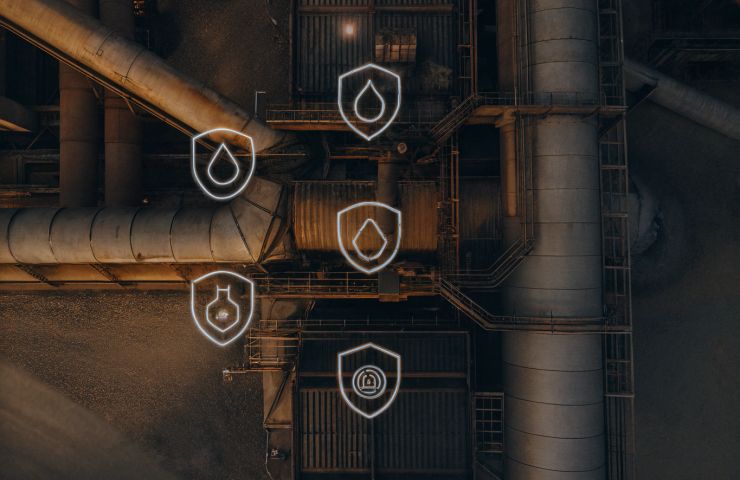
Hydrogen Infrastructure Insurance Premiums to Top $3B by 2030
August 4, 2025Ever wondered who’s underwriting the hydrogen boom? Governments and industries are plowing well over $680 billion into clean hydrogen projects worldwide by 2030, but behind the headlines, insurers and brokers are scrambling to tailor policies for everything from electrolyzer breakdowns to marine cargo snags. According to Allianz Commercial, by the time we hit 2030, premiums linked to hydrogen ventures could top $3 billion globally—a sign of the sector’s meteoric rise and its knotty new risk factors.
Major players in the insurance world—Allianz Commercial, Marsh, Zurich Insurance Group and Aon—aren’t just dipping their toes into the hydrogen wave; they’re diving in headfirst. Marsh just rolled out facilities that can underwrite up to $300 million per project, exclusively for hydrogen initiatives. Meanwhile, Zurich is promoting multi-line policies that bundle construction cover, start-up delays, equipment hiccups and even business interruption for schemes up to $250 million in capital. Not to be outdone, Aon has launched lifecycle insurance products that wrap liability, marine cargo, equipment breakdown and environmental risks into one neat package. This rush to innovate comes as the market’s exploding—from around 200 planned hydrogen pilots back in 2021 to more than 1,500 by 2025, marking an almost 600% leap—and with over $680 billion in global investment lined up through 2030. Toss in 60-plus national strategies for hydrogen infrastructure, and insurers are juggling a patchwork of regulations and support schemes. All this growth underpins Allianz Commercial’s goal: a 150% spike in renewables revenue by 2030, backed by an extra €20 billion funneled into climate and cleantech solutions.
Specialized Insurance Facilities
As the hydrogen space matures, insurers aren’t content with tweaking existing energy policies—they’re constructing bespoke facilities from the ground up. Allianz Commercial has already earmarked €20 billion for more climate and cleantech bets, carving out a chunk specifically for low-carbon hydrogen ventures. These custom packages tackle risks unique to hydrogen production: think electrolyzer malfunctions, feedstock delivery delays, glitchy start-ups, liability exposures and marine logistics hiccups. By covering both the build and run stages, insurers give project financiers the confidence they need to lock in debt and equity. Most programs rest on hefty reinsurance pools and leverage tailor-made risk models—often fine-tuned alongside engineering consultancies—to nail down premiums and policy terms. Marine cargo cover, for instance, now factors in purity checks and specialized containment vessels. And as hydrogen fuel cells and ammonia-based projects come online, these insurers are tweaking modules for brand-new use cases. The upshot? According to the Hydrogen Council, such dedicated insurance lines will be a linchpin for unlocking that projected $680 billion investment pipeline through 2030.
Tech Spotlight: Clean Hydrogen Production
At the heart of many of these ventures are electrolyzers, nifty machines that split water into hydrogen and oxygen using renewable power—a process called electrolysis. It’s a clean, zero-emission route that pairs beautifully with on-and-off wind and solar farms. On the flip side, blue hydrogen—made via steam methane reforming plus carbon capture—still holds sway in areas where green power is scarce. Insurers are poring over each method’s quirks, from stack longevity in electrolyzers to CO2 handling at capture sites. It’s that level of technical detail that shows why a one-size-fits-all energy policy just doesn’t cut it.
Europe’s Leading Role
Across Continental Europe, the push for hydrogen infrastructure is in overdrive. Western and Northern Europe alone host 617 of the 1,500 planned projects globally, fueled by national roadmaps under the European Green Deal. Governments have dangled roughly $199 billion in investment through 2030, and industries from steel to mobility are lining up. Public-private partnerships are de-risking first-generation projects and sweetening co-financing deals, which insurers monitor closely when crafting coverage. Meanwhile, the region’s Emissions Trading System plays a key role in valuing low-carbon hydrogen assets.
Historical Context & Risk Evolution
Don’t let the buzz fool you—hydrogen’s been around in refineries, chemical plants and fertilizer factories for decades. What’s new is its starring role in industrial decarbonization. Back in 2021, insurers had about 200 hydrogen projects on their books, drawing on years of industrial gas expertise. Fast-forward to today, and we’re talking gigawatt-scale electrolyzers, novel storage solutions and cross-border pipelines. Those leaps in scale and complexity introduce fresh headaches: hydrogen embrittlement, safe storage at massive volumes and shifting regulations. Big steelmakers and ammonia players are even experimenting with hydrogen as a feedstock, adding another layer of design and coverage complexity. To keep pace, underwriters collaborate tightly with engineers and policy experts, constantly refining their loss models.
Strategic Implications & Collateral Impacts
For insurers, the hydrogen insurance market is a rare win-win: a fresh premium pool that could clear over $3 billion by 2030 and a chance to drive sustainable energy forward. That growth is especially welcome when some traditional lines are flat or even shrinking. Plus, it dovetails neatly with broader goals like industrial decarbonization and de-risking investments in clean hydrogen. But it’s not all smooth sailing. Carriers must push down coverage costs to keep project economics attractive, champion unified safety standards and work hand-in-glove with regulators to plug any gaps. Underwriters are also wary of geo-accumulation risks—think multiple hydrogen hubs hit by the same extreme weather event—so catastrophe modelers are beefing up their analytics to include these facilities. Crack this nut, and you’ve got a blueprint for insuring the next wave of emerging energy tech.
Looking Ahead
By the close of this decade, don’t be surprised if hydrogen leaps from niche demos to mainstream energy and industry infrastructure. Carriers that marry bold risk appetites with deep technical savvy—those willing to partner with developers, technologists and governments—will snag the biggest slice of this market. As Allianz Commercial and its peers bulk up their low-carbon portfolios, they’re not just insuring projects; they’re insuring the future of the hydrogen economy. And if they get it right, they’ll have played a starring role in rewriting energy finance.



 With over 15 years of reporting hydrogen news, we are your premier source for the latest updates and insights in hydrogen and renewable energy.
With over 15 years of reporting hydrogen news, we are your premier source for the latest updates and insights in hydrogen and renewable energy.